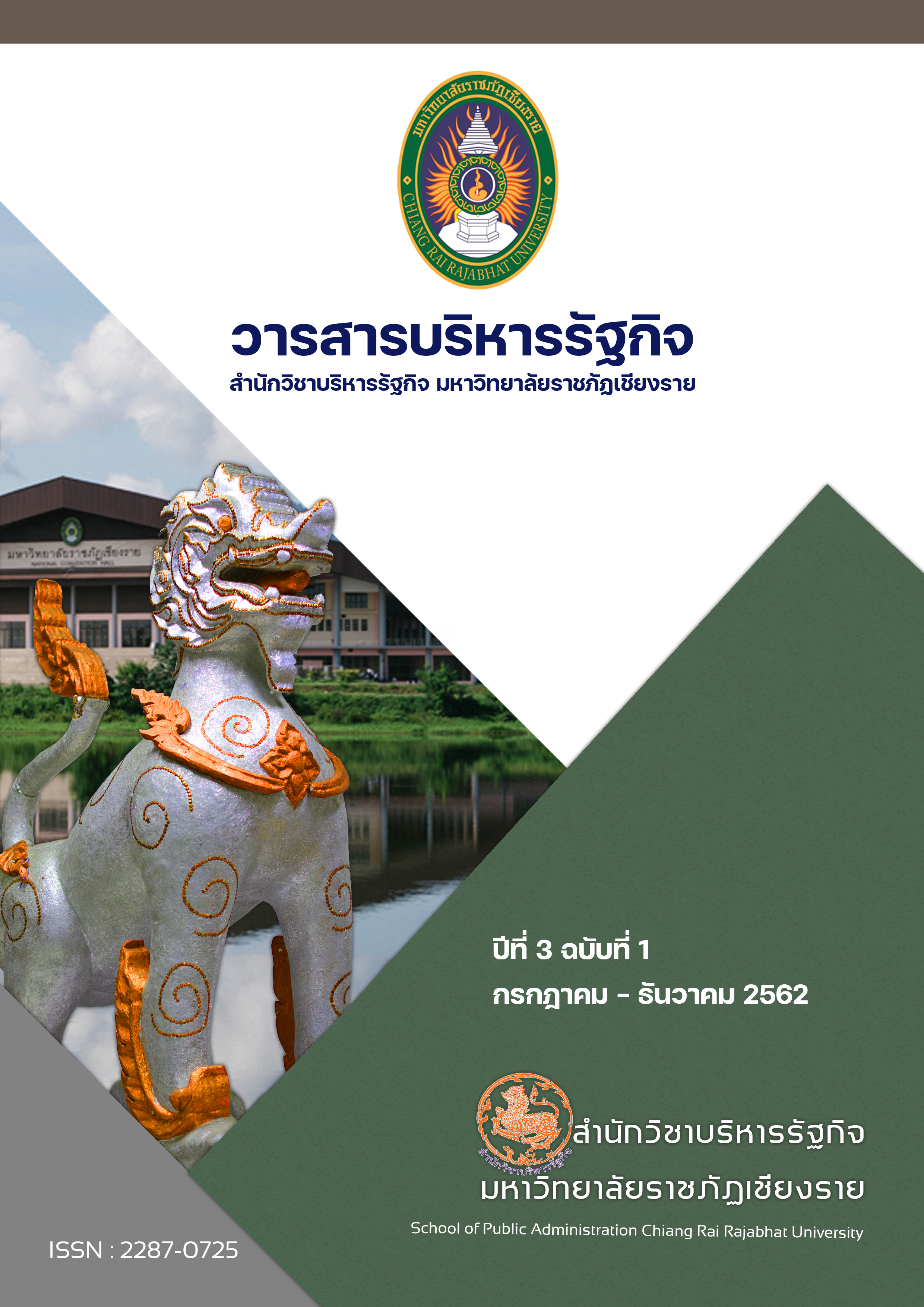ความสัมพันธ์ของประสิทธิผลของผู้นำ และความสามารถในการแข่งขันของวิสาหกิจขนาดกลางและขนาดย่อมในจังหวัดเชียงใหม่
Main Article Content
บทคัดย่อ
การวิจัยนี้มีวัตถุประสงค์เพื่อ 1. เพื่อศึกษาประสิทธิผลของผู้นำของวิสาหกิจขนาดกลางและขนาดย่อมในจังหวัดเชียงใหม่ 2. เพื่อศึกษาความสามารถในการแข่งขันของวิสาหกิจขนาดกลางและขนาดย่อมในจังหวัดเชียงใหม่ 3. เพื่อศึกษาความสัมพันธ์ของประสิทธิผลของผู้นำกับความสามารถในการแข่งขันของวิสาหกิจขนาด กลางและขนาดย่อมในจังหวัดเชียงใหม่ กลุ่มตัวอย่างที่ใช้ในการศึกษาครั้งนี้คือผู้บริหารของวิสาหกิจขนาดกลางและขนาดย่อมที่เป็นนิติบุคคลจำนวน 400 ชุด เครื่องมือที่ใช้คือแบบสอบถาม มีค่าความเที่ยงตรงมีค่าคะแนน 0.68 –1.00 คะแนน และค่าความเชื่อมั่น เท่ากับ 0.97 เพื่อเก็บรวบรวมข้อมูลในการวิจัย การวิเคราะห์สมการโครงสร้างผลการวิจัย พบว่า 1) ความคิดเห็นต่อประสิทธิผลของผู้นำ อยู่ในระดับมาก 2) ความคิดเห็นต่อความสามารถในการแข่งขัน อยู่ในระดับมาก 3) ความสัมพันธ์ระหว่าง ประสิทธิผลของผู้นำกับความสามารถในการแข่งขันของวิสาหกิจขนาดกลางและขนาดย่อมในจังหวัดเชียงใหม่ ผลพบว่า ประสิทธิผลของผู้นำ มีความสัมพันธ์ในทิศเดียวกันกับความสามารถในการแข่งขัน โดยมีสัมประสิทธิ์เท่ากับ 1.31 ที่ระดับนัยสำคัญ 0.01
Article Details
เอกสารอ้างอิง
Bass, B. M., & Avolio, B. J. (1997). Transformational leadership: A response to critiques, In M. M. Chemers & R. Ayman (Eds.), Leadership theory and research: perspectives and directions (pp. 49-80). San Diego, CA: Academic Press.
Beal, R. M. & Yasai-Ardekani, M. (2000). Performance implications of aligning CEO functional experiences with Competitive strategies. Journal of Management, 26(4), 733-762.
Jorge, P. M., Eve, M. P., Juan, J. T., Maria, D. L., & Jose, F. M. (2015). Organizational design, quality management and competitive advantage in hotels. International Journal of Contemporary Hospitality Management, 28(4), 762-784.
Maina, M. (2012). “Total Quality Operations Effectiveness and Competitive Advantage in Horticultural Industry in Kenya”. University of Nairobi. Kenya.
Ministry of Information and Communication Technology. (2016). Digital development plan for economy and society. Retrieved March 15, 2019 from http://www.mict.go.th/assets/portals/1/files/590613_4Digital_Economy_Plan-Book.pdf
Office of Small and Medium Enterprises Promotion. (2017). Small and Medium Enterprise Situation Report 2017. Retrieved March 15, 2019 from http://119.63.93.73/sme2015/Report/Summary
Office of the National Economic and Social Development Council. (2018). National Economic and Social Development Plan No. 12 (2017-2012). Retrieved November 15, 2018 from https://www.nesdb.go.th/ewt_news.php?nid=6420&filename=develop_issue
Panthai, B. (2014). Preliminary Educational Research Methodology. Bangkok : Ramkhamhaeng University Press.
Pulley, M. L., Sessa, V., & Malloy, M. (2002). E-leadership: a two-pronged idea. Training and Development. 35–47.
Raduan, C. R., Haslinda, A., & Alimin, I. I. (2010). A Review on the Relationship between Organizational Resources, Competitive Advantage and Performance. The Journal of International Social Research. 3(11). 490-498.
Sooksan, K., & Gayle, C. A. (2010). The power of vision: statements that resonate. Journal of Business Strategy, 31(1), 37-45.
Suk, B. C., Kihwan, K., S.M. Ebrahim, U., & Seung-Wan, K. (2016). “Transformational leadership and employee creativity: Mediating role of creative self-efficacy and moderating role of knowledge sharing”, Management Decision, 53(5), 894-910.
Vanichbancha, K. (2010). Using SPSS for windows for data analysis (2nd edition. 16). Bangkok : Thammasarn Company Limited.


